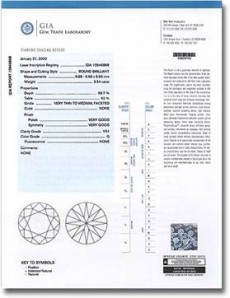The jewel industry has been certifying diamonds for over a century. In 1890, an organization known as the London Diamond Syndicate formed to evaluate the diamonds mined from South Africa. That London Diamond Syndicate utilized a color grading system as they sorted through the rough diamonds. These early methods lacked consistency and used vague terms such as Brown to describe diamond colors.
The Gemological Institute of America (GIA) was established in the early 1930s to educate the industry through gemological instrumentation and research. Robert M. Shipley, a former jewelry retailer, organized this new society in his home. The GIA provided mail-order courses along with gem testing services. They honed their testing techniques and expanded their laboratories. In 1953, they developed the four Cs of carat weight, color, cut, and clarity as an official worldwide diamond grading system.
The carat weight of certified loose diamond is measured by means of electronic micro balances that weigh up to the thousandth of a carat. Colors are graded against a set of master stones predetermined colors and viewed under controlled lighting against definitive backgrounds. Diamond stones are checked for clarity characteristics through a 10X microscope. Evaluators also check for gemstone treatments such as fracture filling when examining a jewel’s clarity. The “cut” of a diamond does not refer to the stone’s shape alone, but measures a diamond’s polish, proportions, facet uniformity, and symmetry.
The certificate included with the diamond will have information such as measurements, fluorescence, shape and a diagram of clarity characteristics. Certified diamonds have been verified as to their quality, allowing customers to buy jewels with confidence. They hold a better value, simplify the comparison process, and broaden a consumer’s shopping base.






